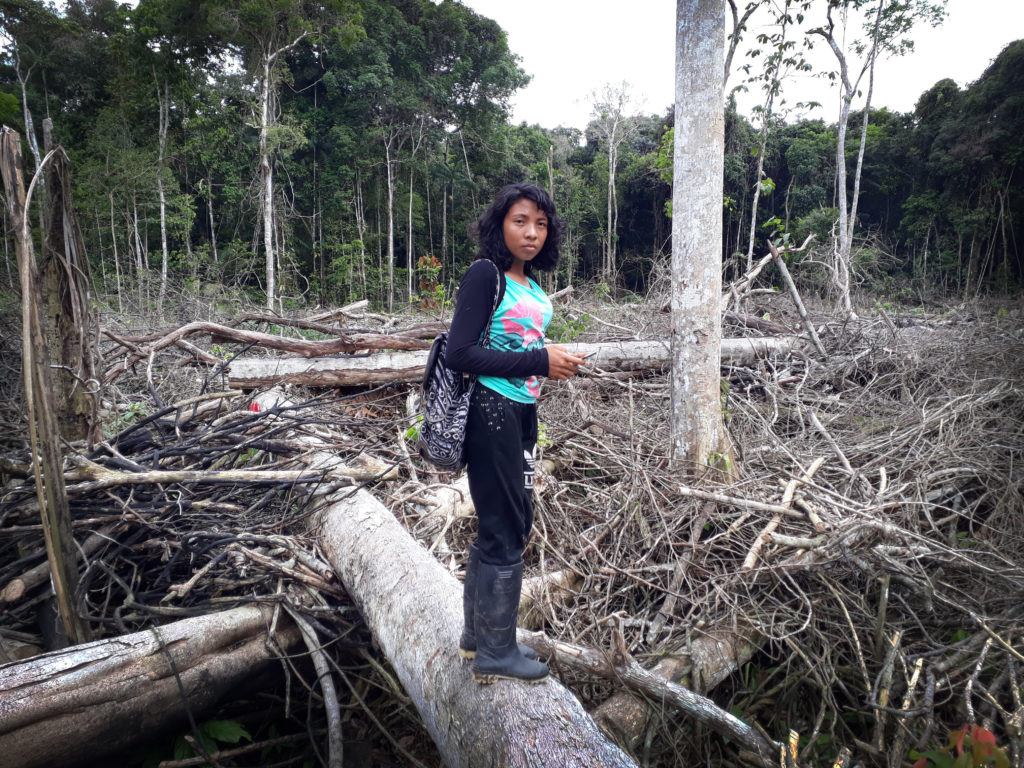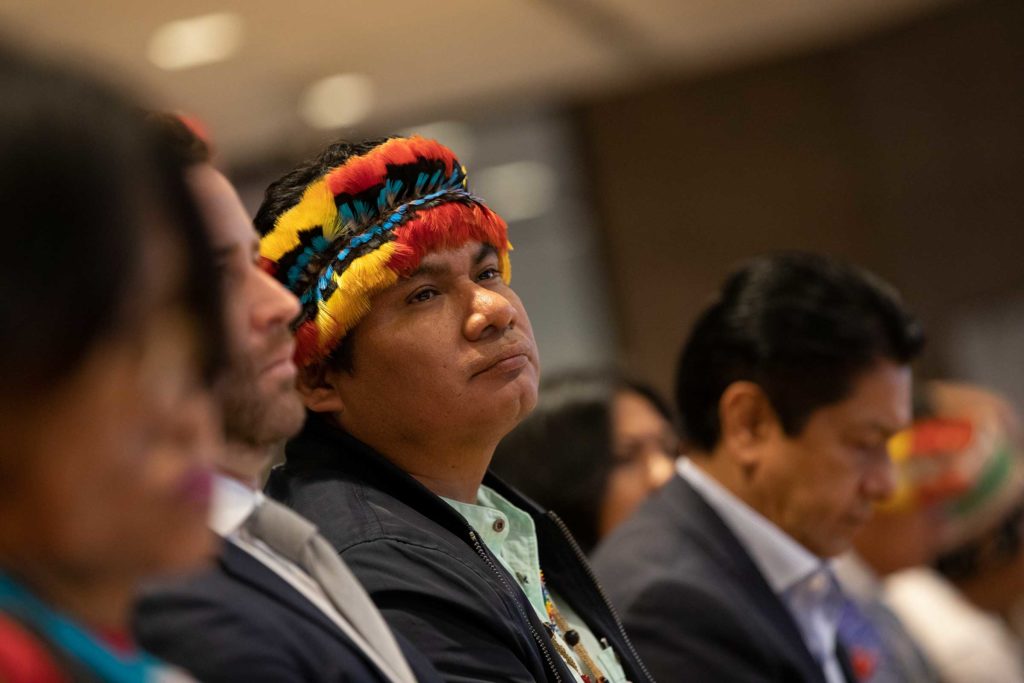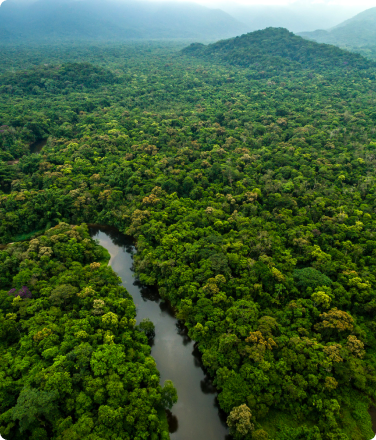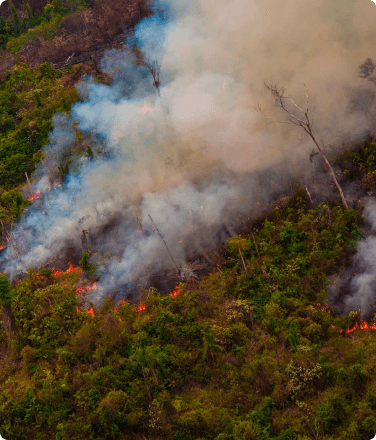Gustavo Sanchez, Executive Secretary of AMPB, presents at COP27: Realizing the Pledge event. IMAGE CREDIT: GATC
Global leaders and climate activists convened in Sharm El Sheikh, Egypt from November 6-18 for the United Nations’ Conference of Parties (COP27), the world’s preeminent climate summit.
Amongst those in attendance were representatives from the Rainforest Foundation family (RFF): Rainforest Foundation Norway (RFN), Rainforest Foundation US (RFUS), and Rainforest Foundation UK (RFUK).
The RFF has been working steadfastly to ensure more financing reaches the indigenous peoples and local communities directly fighting the climate crisis. In September, the three executive directors and leadership from the Global Alliance of Territorial Communities’ (GATC), the foremost grouping of representative indigenous peoples organizations globally, introduced the “Shandia Platform,” a direct financing mechanism for indigenous peoples and local communities across the tropical belt. That event was hosted by the Ford Foundation as part of New York City’s Climate Week NYC in September, drawing over 150 attendees.
At COP27, the organizations deepened this dialogue by co-presenting successful direct funding mechanisms, concrete recommendations to increase transparency and accessibility, and to build local capacity with representatives from indigenous and allied organizations, including the GATC. Representatives from Brazil, Colombia, Costa Rica, Mexico, and the Democratic Republic of Congo also provided insights as to what needs to be funded, emphasizing participatory mapping, land titling, and local land use planning as priorities for IPLC empowerment.
Why Do Indigenous Peoples Need Direct Finance?
Keeping the world’s remaining rainforests standing is an integral part of any plan to protect the world from the climate crisis. And indigenous peoples and other local communities (IPLCs) —an umbrella term that’s inclusive of ethnic groups that do not descend from colonizers—are the best defenders of the world’s rainforests. An increasing number of studies show that IPLCs provide the best forest protection—better even than national parks.

They also control a substantial portion of the rainforest. More than a third of the world’s intact forests—and approximately half the Amazon rainforests—are held by IPLCs. The fate of global forests and the fate of IPLC lands are inextricably linked.
But despite this, shockingly little money in the climate fight has gone to IPLCs. According to a 2021 RFN report, less than 1% of international climate finance went to support IPLCs in the last decade, and a small share of this funding actually reached the IPLC organizations and communities.
At last year’s COP26 in Glasgow—which came on the heels of that report—several national governments and private foundations partnered to commit $1.7 billion to support IPLCs in the fight to end deforestation.
At COP27, this group of donors reported that they were on track to meet the $1.7 billion target over the five years covered by the pledge, but that the share of funding that went directly to IPLCs was very low, just 7%. This figure calls for donors to intensify their work in addressing the barriers that are preventing increased direct funding, and to ensure a larger share reaches the ground.
Speaking at the Shandia Platform launch in September, RFN Executive Director Toerris Jaeger focused on the historic crossroads the movement finds itself in following that pledge.
“Since then, all eyes are on the ‘How,’” Jaeger said. “How do we go from acknowledging the historical funding gap towards those who have proved to be the best stewards of nature to actually providing more support? Very little funding reaches IPLCs, with donor regulations creating barriers for IPLCs’ access to—and leadership over—funding.”
Creating the Conditions to Enable Direct Finance
At the Shandia launch, RFUK Executive Director Joe Eisen spoke about the enabling conditions necessary to move towards more IPLC access to finance—and the conditions that have kept funding out of the hands of IPLCs, despite the ample evidence suggesting it would be money well spent.
“Political pressures… have made some institutional donors risk averse. And so they pour tens of millions of dollars into those organizations that have the requisite fiduciary systems but may lack the legitimacy on the ground,” Eisen said. “IPLC-led initiatives such as the Shandia platform can be more answerable to communities. They understand their needs far better.”

In recent years, RFUS has partnered with IPLC regional organizations to help strengthen financing platforms—as with the Mesoamerican Alliance of Peoples and Forests (AMPB)’s Mesoamerican Territorial Fund. This is done with the aspiration of unlocking institutional giving that has been denied to these IPLC organizations for so long.
Tuntiak Katan—Vice Coordinator of Coordinator of Indigenous Organizations of the Amazon River Basin, and an indigenous Shuar from Ecuador—voiced frustration at the failure of international institutions from delivering funding to IPLCs, but sounded a hopeful note about the Shandia Platform for remedying that in the near future.
“Apparently there’s a lot of money in the public purse, but the truth is: communities are not getting it,” Katan said. “Invite governments to stop destroying nature, and to invest more in its protection and restoration.”
Speaking at a Shandia event at COP27, Gustavo Sanchez—President of the Mexican Network of Forest Peasant Organizations (Red Mocaf) and GATC member—said that, “We need to move away from this idea of donors and recipients. We would like to make a call to ‘co-invest.’ That means that we should really recognize the investment that IPLCs are making in order to speed up and increase the scale at which resources should be being sent and received so that we can curb climate change in time.”
Maggie Charnley, Head of the International Forests unit of the United Kingdom’s Foreign, Commonwealth & Development Office neatly summarized the inherent injustice of IPLC forest protection, saying that, “A challenge on all of us for the next few years to work out how it is that we square the fact that some of the most important public goods sit in a handful of countries, and that those public goods are particularly protected by a group of people who are particularly vulnerable.“.
A Roadmap to Success
Suzanne Pelletier, Executive Director of Rainforest Foundation US, emphasized the importance of a multi-pronged approach to investing in IPLCs, such as community mapping and legal advocacy, for those communities seeking land rights; and the strengthening of local community governance, so that IPLCs are able to more effectively act in their collective self-interest. And she stressed the need for territorial defense funding.
For example, a study of RFUS’s Rainforest Alert program saw that those communities who used smartphone and satellite-based forest protection systems saw a more than 50% drop in deforestation in the course of a single year.
“Shandia will bring the pipeline of solutions together with the pipeline of funds. But it will take collaboration,” Pelletier said. “Let’s get to work!



